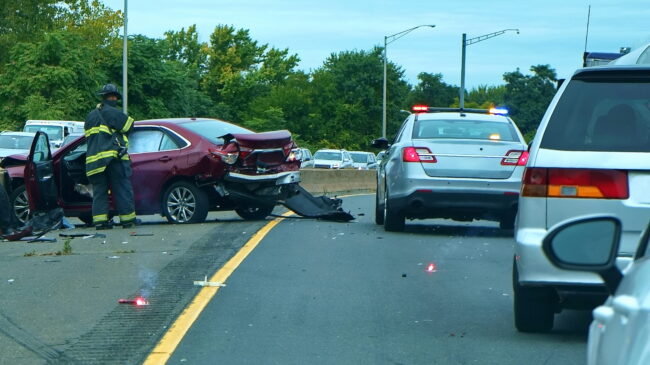At the beginning of March, the nonprofit National Safety Council (NSC) released its preliminary semiannual estimate for 2020 motor vehicle fatalities. Press reports highlighted the significant increase in crash deaths, up 8%, despite reduced vehicle-miles traveled, down 13%, which generated an eye-popping fatality rate increase of 24% (from 1.2 to 1.49 fatalities per 100 million vehicle-miles traveled). But this increase in fatalities is not uniform across states, areas within states, or road types. That information is still unavailable due to lags in data reporting that have been exacerbated by the coronavirus pandemic, but it will be critical to assessing the traffic safety impacts of the COVID-19 emergency and formulating any future policy responses.
It is important to note that these estimates are nationwide averages, which provide little policy-relevant information. The National Safety Council also breaks down state-level estimates, which show a wide variation in the number of crash fatalities across states. Nine states saw year-over-year declines in the number of estimated deaths, while eight states saw more than 15% increases in the estimated number of deaths.
But variations within states and between road types can be even more significant. Importantly, the COVID-19 emergency appears to have resulted in different impacts on rural and urban travel. By examining monthly Traffic Volume Trends reports from the Federal Highway Administration, one can see that while nationwide vehicle-miles traveled (VMT) on arterial roads declined by 13.98% between 2019 and 2020, urban declines were steeper than rural declines, at -14.77% and -11.84%, respectively. This resulted in rural arterial traffic’s share of total arterial vehicle miles traveled increasing from 27.09% to 27.76%.
Rural roads are generally far more dangerous than urban roads and this proved no different during the pandemic. Preliminary research from the National Highway Traffic Safety Administration (NHTSA) that examined fatal crashes in the first half of 2020 shows that the rural fatality rate—already at a higher base—increased considerably more than the urban fatality rate. The table below reports relevant fatality rates (deaths per 100 million VMT) by roadway functional classification for June 2019 and June 2020.
| Road Type | June 2019 Fatality Rate | June 2020 Fatality Rate | Fatality Rate Increase |
| Rural Interstate | 0.71 | 1.18 | 66.20% |
| Urban Interstate | 0.46 | 0.64 | 39.13% |
| Rural Arterial | 2.06 | 2.95 | 43.20% |
| Urban Arterial | 1.10 | 1.32 | 20.00% |
| Rural Local/Collector | 2.13 | 2.87 | 34.74% |
| Urban Local/Collector | 0.82 | 0.88 | 7.32% |
Similar NHTSA research by crash subcategory that covers the full year of 2020 will likely not be available until the middle of 2021, but June 2020 appears to be the beginning of the persistent higher fatality trend seen in NSC estimates. In June 2020, NHTSA estimates that 53% of total fatalities took place on rural roads, up from 47% in June 2019, even though less than 20% of the U.S. population resides in rural areas.
Fatalities also skewed toward younger age groups that tend to engage in riskier behaviors, with 16-24-year-olds accounting for 19% of fatalities in June 2020 compared to 15% in June 2019, and 25-34-year-olds accounting for 21% versus 18%. The proportion of fatalities for the 65+ age group actually fell quite substantially, from 19% to 14%.
If these trends hold, popular policy responses may do little good. Politicians and the news media tend to focus on urban roadway fatalities, hence the professional advocacy around “vision zero” campaigns and associated “road diets,” which aim for zero traffic-related deaths by reducing vehicle speeds and promoting alternatives to driving in dense cities.
While urban areas have seen an uptick in motor vehicle fatalities during the pandemic, the trend is mostly coming from rural areas. As NHTSA put it, the 2020 fatalities it analyzed “were more rural, involved more people 16 to 24 years old, were associated with risk-taking behaviors such as riding without a seat belt, and involved rollovers and ejections (which occur more often at high speeds and when occupants are unrestrained).”
As more data come in, policymakers should seek out careful analysis of these troubling trends. It is also possible these trends may reverse themselves, at least to some degree, as the pandemic ends and the “new normal” in travel behavior likely returns to something closer to the old normal. But policymakers’ and professional activists’ usual tools that focus on addressing urban traffic safety are likely to be of little value in rural areas, which appear to be strongly driving the trend in COVID-era vehicle fatalities. A patient, data-driven approach is needed.

